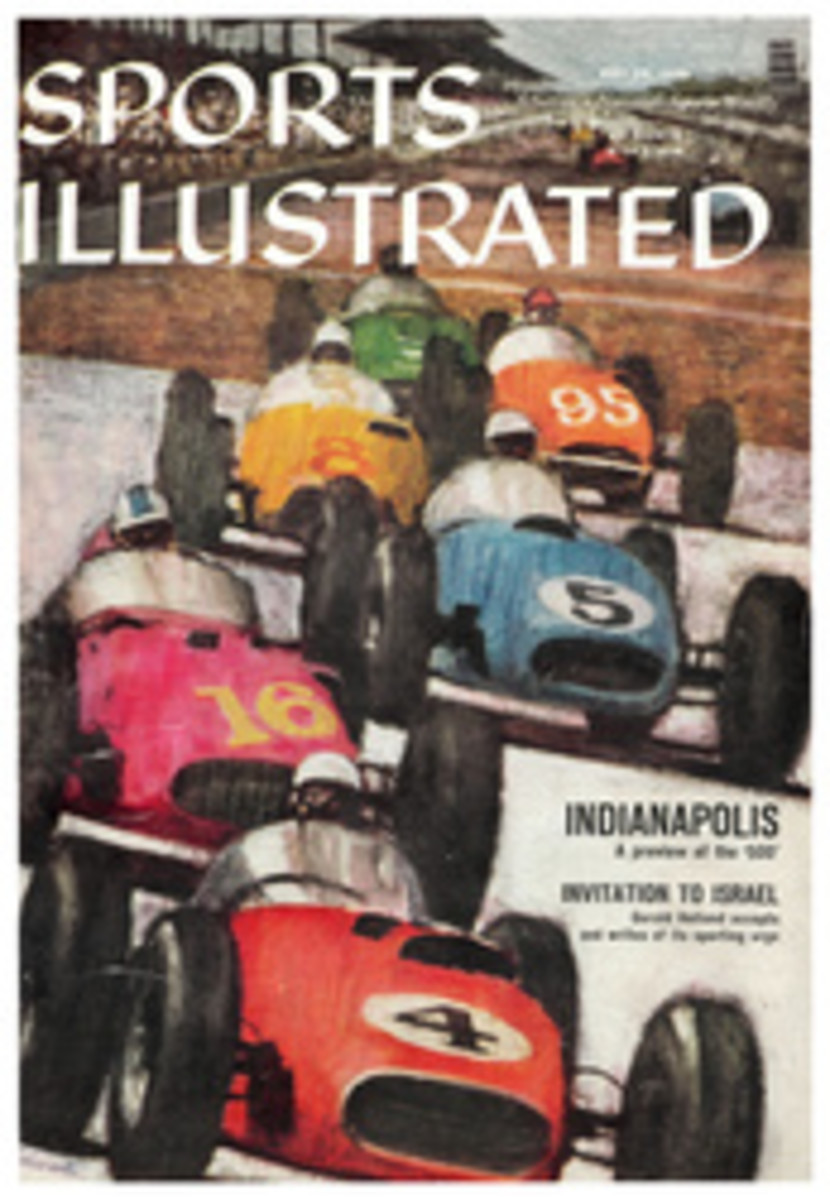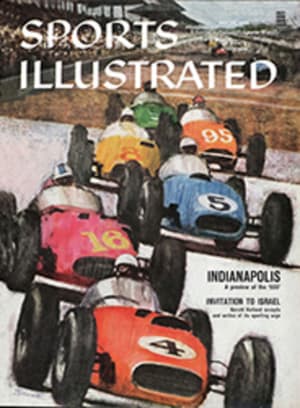
Sailors' jamboree
The Ensenada is like no other ocean race in the world. For one thing, it is a yachting jamboree; 318 boats of all classes—more than in any other ocean race going—participated in last week's 140-mile downwind slide from California's Newport Beach to the resort town of Ensenada in Mexico. For another thing, it has a gay, carnival atmosphere in which sailors dress in outlandish costumes, and wives and kiddies go along for the ride—figuratively speaking—by driving down on the shore road. Finally, the goal of the whole affair is, more often than not, the beery, clam-scented old clapboard saloon called Hussong's, where the losers are expected to stand the winners drinks—a painless process, as the picture above shows.
Usually the wind stands fair to Hussong's, but this year it was perverse on race day. Aboard Lark, a graceful, blue-hulled 46-foot PCC sloop, Skipper Paul G. Holmes, an electronics engineer, was downright exultant at the unaccustomed head-on direction of the wind. "The wind's on our nose," he chortled. "This is one race that's not going to be won by those old tubs booming down in a gale."
At the starting gun Lark began its zigzag beat to weather, trying to slip through the cordon of wind like a shifty halfback starting an end run and cutting back through tackle at the precise moment. The Kenyon showed five knots, but most of it was parallel to the true line of scrimmage. As the afternoon wore on, the wind slackened and the crew anxiously scanned the sky for any weather change. The 66-foot sloop Nam Sang lay abeam. "There's not enough breeze for those big fellows," explained Crewman Jerry Andrews.
As night fell, the entire fleet seemed to be bobbing on the water like corks. "We're slatting," exclaimed Helmsman Chip Cleary in dismay.
Lark had manfully beat its way to the lights of San Diego by midnight, but there it lay. It turned a complete circle at one point.
By morning Lark, and with her the whole race, was still becalmed, wallowing in a sea that looked like nothing so much as a monstrous vat of warm grease.
WIND AT LAST
Shortly before noon, another PCC off the port bow broke out a blue-red-and-white spinnaker. Lark's crew watched anxiously. It filled.
Without a word Lark's crew hustled forward and began hoisting its own. It filled. The wind was light but favoring. Lark began to crawl ahead, and as the afternoon moved on, its velocity increased. Pretty soon it was—finally—the downwind race it was meant to be.
As the boats picked up speed, the other PCC—which turned out to be Comanche—and Lark began a private nine-hour boat-for-boat duel. Having taken 24 hours to negotiate the first half of the race, they made the last half in less than eight. The sun had set and the afternoon wind was still fair as Lark swept by the Ensenada breakwater between the Todos Santos light and the mainland at an exhilarating eight knots. Spirits lifted with the boat. "That Kenyon's slow!" shouted the captain. "Look at that wake! We're doing nine." Below decks Cleary rummaged through the food locker. "Isn't there any apple pie to go with this cheese?" he screamed. "What is this—a hell ship?" At that point, a few hundred yards from the committee boat, Lark hit a wind pocket and died. She finished second to Comanche in the PCC class.
The first to finish (29 hours, 52 minutes, 51 seconds) was Financier Howard Ahmanson's mighty 58-foot sloop Sirius. But on corrected time, for the second year in a row, the winner was San Diegan Ashley Bown's 40-foot cutter Carousel. What Carousel had done was slip ahead of the fleet rounding San Diego's Point Loma in the worst of the calm by squeezing dangerously close to shore and picking up an infinitesimal land breeze. Carousel had taken two hours to clear Point Loma while the offshore boats took 12.
Ashore, Ensenada was a combination Mardi Gras and fraternity hell week. The population was swelled by 4,000 water-and-road-arrived southern Californians, who made their way through the stores and curio shops, loading up with handcrafted souvenirs. They nearly swamped Hussong's, crammed the excellent restaurants and filled the dance floors.
On Saturday afternoon the trophy presentation coincided with a civic barbecue in which the visitors gratefully sipped the wine of the land, tequila, and its Martini equivalent, the Margarita (tequila, Cointreau, lime juice). They nibbled at beans, tortillas and chunks of meat that had been barbecued overnight in open pits, and they dodged the reckless Mexican horsemen who dashed excitedly through the crowd like a posse of Zorros. They sang songs, toasted the race, made their room reservations for next year and finally wended their way northward—either powering through the chop in their sleek racing vessels by sea or tacking through the mountains in their duffel-packed sedans. Each skipper was sure of two things: next year the winds will be fair, and victory will be his.
PHOTO
YACHTSMEN REUNITE IN ENSENADA WITH WIVES AND FRIENDS AT END OF THE RACE

